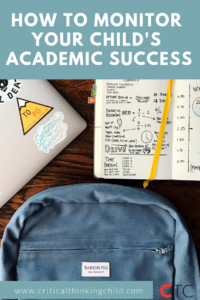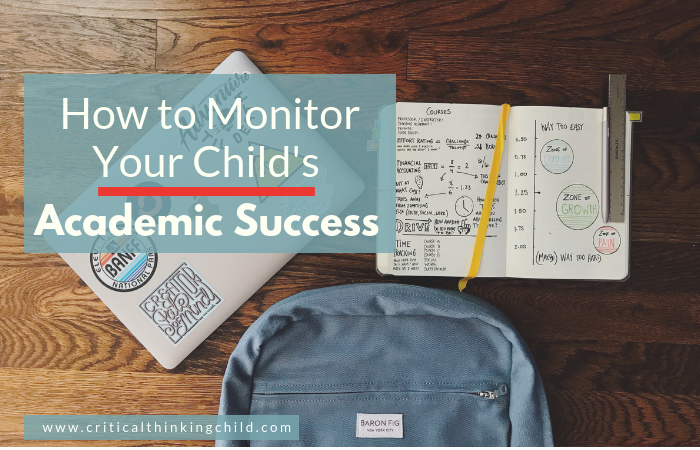Is your child successful in school? This question may seem easy to answer on the surface, but there’s more to it than meets the eye. Success looks and feels different to everyone. It’s important to learn how to monitor your child’s academic success in a way that makes sense for your child.
How do you define success?
If you’re overwhelmed by the very idea of success, you’re not alone. Often, it feels like the pressure to succeed begins as early as preschool, especially if you’re vying for a spot in a gifted program. Adding to the sense of overwhelm, there are so many different ways to measure success. Some families gauge it based on grades or test scores, while others look at extracurricular activities or admission into selective programs or schools.
Before you start to measure and monitor success with your child, you must define what it looks like for you and them. There are a few topics to consider:
- Report cards offer minimal information, but useful data exists if you know where to look.
- SMART Skills and state standards offer a more in-depth look at your child’s academic success.
- A holistic approach to success will prepare your child for lifelong success.
- Quick assessments provide an immediate look at your child’s progress.
To monitor success, go beyond the report card
One measure of progress many families use is the report card. Once each quarter, parents see their child’s letter grades and percentage scores in various subjects, including reading, math, science, and social studies. While this may seem like an indicator of progress, there are some major flaws with relying on the report card to monitor your child’s academic success.
Often, these report cards are distributed at brief parent teacher conferences that may last only 10-20 minutes, and the grades are often inflated or deflated. Worse, these conferences don’t allow adequate time for you to ask questions and get a full picture of your student’s performance.
Unfortunately, most report cards are the culmination of correct and incorrect answers over the course of the term. But this is often only a measure of how much a student can memorize and regurgitate. Learning goes deeper than this, and a traditional report card does nothing to reflect a child’s progress in critical thinking skills, problem-solving, or analysis.
Don’t dismiss data entirely
While report cards can be frustrating, data is still helpful. Instead of relying on the traditional report card, take a look at tests that norm nationally, such as End of Grade or End of Course tests. Because these are not limited to a single classroom, your child’s data will be part of a much larger sample size. It’s one thing to know that your child is performing well in their class. It’s another to know that they’re performing well against the national average.
Explore your child’s SMART Skills and state standards
Looking at academic skills in the context of SMART Skills will allow you to escape the vague reality of report cards. SMART stands for Spatial, Math, Analogy, Reading, and Technology, and covers most of what your child will learn in school. To do this, take a look at our SMART Skills assessment tool, which will help you identify your child’s areas of strength and build from there.
You can also look for your state academic standards (usually on the state Department of Public Instruction website) to see what specific topics your child should be learning. Some states even pace out standards by quarter or week, so you can make sure your child is on track.
Follow a holistic approach to monitoring success
One of the dangers of a strictly data-driven approach it’s easy to fall into the trap of viewing mistakes as failures. Unfortunately, this does more harm than good. Your child may stop taking risks and try to be “perfect” in all ways. Success is not about being perfect; it’s about setting up the behavior patterns that build life-long learners and caring citizens.
Success is not about being perfect; it’s about setting up the behavior patterns that build life-long learners and caring citizens.
Many schools have begun teaching students how to develop a growth mindset, in which they use mistakes as learning opportunities and chances to persevere. Many families have also started to look beyond academic data. Instead of assessing success based solely on grades and percentiles, they encourage their child to become a curious, self-directed learner who is engaged in his or her learning without micromanagement from a parent or teacher.
The development of these skills often goes beyond your traditional classroom. Project-based learning, experiential education, field trips, and more serve to teach students deeper learning skills that will only benefit your child later in life. Most career paths look for creative employees who think critically, solve problems, and work effectively with others.
You can work with your child’s school by inquiring about extracurricular activities that build these skills, or you can seek them out on your own through summer enrichment programs, after school activities, or even traveling and visiting museums on weekends.
Embrace “quick assessments” to get an instant update on your child’s progress
What do you do if you need to know how your student is doing right now? If you’re not receiving regular information about your child’s academic progress from the school, you can do your own quick assessment using the TAP Method.
The TAP Method relies on three core components: Tracking, Assessing, and Promoting. It’s the result of years of working with parents, teachers, and gifted students, and is designed to help you understand how to monitor your child’s specific and unique academic learning needs.
Regardless of the method you choose, remember you may need to redefine success for you and your child. Focusing on small and large successes that go beyond mere report cards, and praising their effort and perseverance, will lead to your child becoming a more well-rounded student and a lifelong learner.
Pin This To Pinterest for Later




